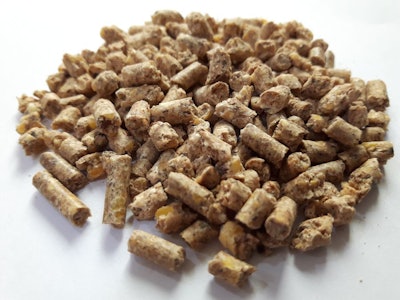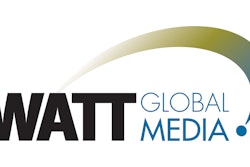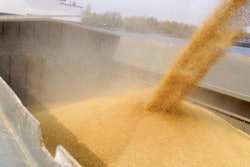
Dr. John Clifford, current USAPEEC veterinary trade adviser and former USDA Chief Veterinary Officer, provides his insights
In my 12 years as U.S. Chief Veterinary Officer, it was clear that active intervention to prevent food contamination has always been, and remains, key to consumer safety, animal health, free trade and production efficiency. Knowingly introducing a contaminant, whether deliberately or through inaction, on the condition that you will eliminate it later in the production process, has never been acceptable to regulators or to the poultry and swine industries.
It’s that word “knowingly” that prompted me to begin my six-month investigation into the role that feed can play as a fomite for pathogens, such as Salmonella, African swine fever (ASF), and porcine epidemic diarrhea virus (PEDv), and to better understand how changes in analytics and policy around feed pathogens are set to impact production and trade programs in the future.
Throughout my career I’ve had privileged access to some of the world’s leading authorities and, in my series of webinars over the past four months produced in coordination with Feed Strategy/WATT Global Media and sponsored by Anitox, I’ve been able to share those insights with producers, investors, regulators, consumers and leaders of our biggest food producers.
The risk to domestic swine and poultry production posed by international trade in feed ingredients was laid bare in my discussions with Bobby Accord, former administrator of the U.S. Department of Agriculture’s Animal and Plant Health Inspection Service (APHIS). Former Administrator Accord explained that imported feed and raw ingredients pose inherent pathogen risks. And given the fact that viruses, in particular, can survive in feed for long periods of time, holding times are ineffective solutions to these risks. He also explored the fact that there are numerous opportunities for re-contamination in the lifecycle of a feed or feed ingredient, which means residual pathogen protection is crucial.
His concerns were ratified by Dr. Megan Niederweder, an expert on African swine fever, a disease which has already crippled Chinese pork producers and is now marching across Europe. Dr. Niederwerder’s research demonstrates that transoceanic shipping can play a dangerous role in the introduction of ASF across international boundaries.
I was struck by the industry’s receptivity to the challenge of feed-based transmission of pathogens when Feed Strategy editor Jackie Roembke and I spoke with Dr. Gustavo Machado about his fascinating research on porcine epidemic diarrhea virus (PEDv) mapping. Dr. Machado has used groundbreaking techniques to build a mathematical model that is capable to predict “next week” risk of PEDv spread to neighboring farms with 95.3% accuracy.
In the past month or so, we’ve focused our attention on Salmonella with Dr. Charles Hofacre and Dr. Nikki Shariat, with high audience participation in these webinars highlighting the appetite for leadership and accurate data in this area. Dr. Shariat addressed our webinar on Salmonella heat-mapping using CRISPR-SeroSeq and I’m delighted to congratulate her on the publication of her paper on this topic in the Journal of Applied Microbiology. It is a must read for anyone who has ever doubted that serotypes of Salmonella found in processing plants are present in feed.
She and her team isolated seven serotypes of Salmonella in feed samples, with S. Infantis being the most predominant. Those of us with encyclopedic memories will recall that S. Infantis was associated with food outbreaks in broiler birds around the end of last year. S. Heidelberg — the serotype responsible for the 2013–14 outbreak that was traced to three processing plants in California — was the second most common isolate. They also isolated S. Reading, associated with the 2019 food outbreak due to consumption of turkey, S. Typhimurium, the second most common cause of Salmonella in humans, and S. Braenderup, the isolate that caused more than 200 million eggs from a North Carolina farm to be recalled several years ago. Of the seven serovars isolated, five have been associated with human illness.
The publishing of Dr. Shariat’s paper should be a watershed moment. There can no longer be any doubt that pathogens from feed sources are finding their way into human foods, and subsequently leading to human sickness and loss of life. Stopping those pathogens at their source is possible: We have the feed sanitization tools needed to kill Salmonella in feed and feed ingredients and to protect against recontamination right up to the point of consumption. It’s time for action.

Dr. John R. Clifford
VIDEO: Global feed industry’s top biosecurity challenges in 2021
‘Animal feed as a fomite for pathogens’ webinar series
Below, you will find links to the on-demand archive of Dr. Clifford’s webinar series on feed as a fomite for pathogens where animal feed manufacturers, poultry and swine nutritionists, and biosecurity and safety professionals learn about new research and proven innovative mitigation strategies to prevent pathogen transmission in the earliest stages of the food supply chain. The webinar series was proudly sponsored by Anitox and presented by Feed Strategy, and WATT Global Media.
Webinar 1: Could local sourcing help control feed ingredients’ microbial quality?
Presented by Bobby Acord, former administrator, USDA’s Animal and Plant Health Inspection Service (APHIS)
Webinar 2: CRISPR-SeroSeq as a tool to reveal Salmonella populations
LIVE BROADCAST ONLY. If you would like a copy of this presentation, contact the presenter, Dr. Nikki Shariat, at [email protected].
Webinar 3: How technology could help predict future PEDv outbreaks
Presented by Dr. Gustavo Machado, assistant professor, Department of Population Health and Pathobiology, North Carolina State University
Webinar 4: Risk and mitigation of African swine fever in feed
Presented by Dr. Megan Niederwerder, assistant professor, Department of Diagnostic Medicine/Pathobiology, Kansas State University College of Veterinary Medicine
Webinar 5: Can the industry improve Salmonella controls to maintain consumer trust?
Presented by Dr. Charles Hofacre, president of Southern Poultry Research Group











